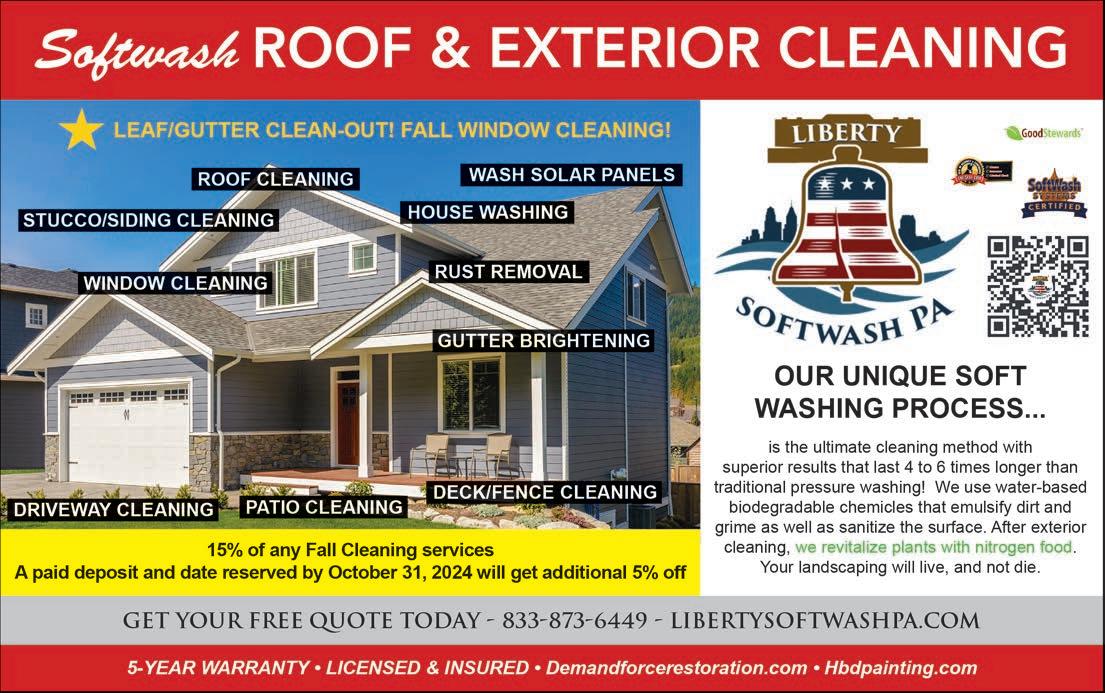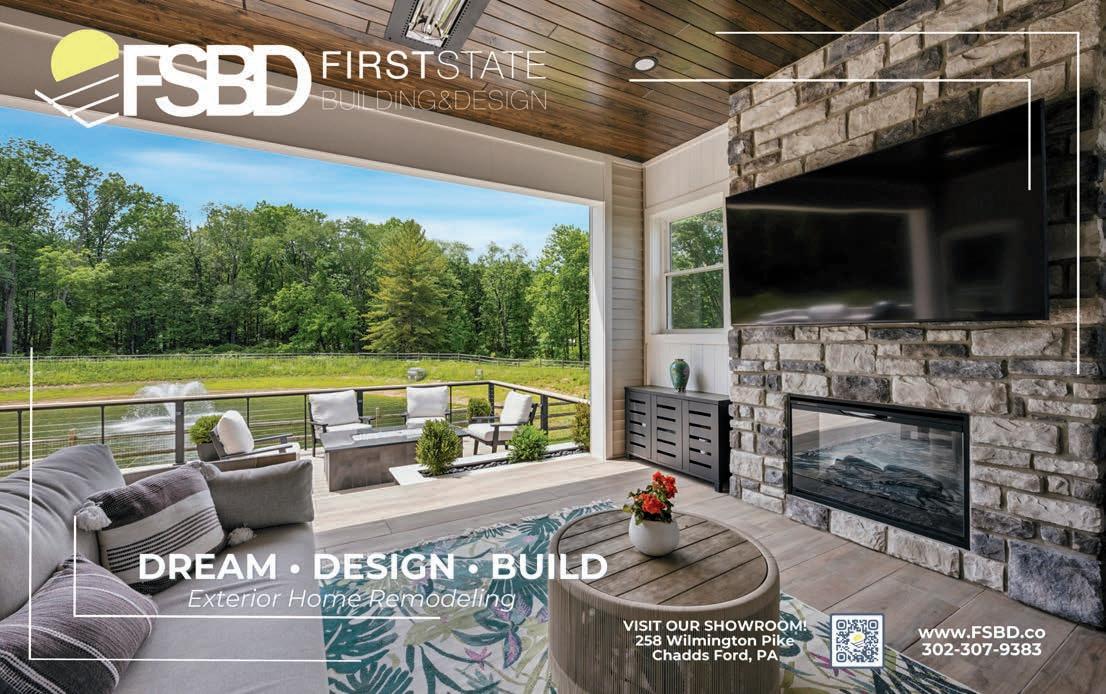








































Meeting the challenge and exceeding customer expectations page 13

Heating your home safely and efficiently
Why fall is the perfect time to prepare for winter























23 Chimney Experts Put Safety First
D.J. Cross Chim
21 About-Face
Let’s
Custom
32 A Step Ahead
Fall’s arrival is the perfect time to start winterizing your home


PUBLISHER
Edward P. McCartney
EDITOR
Peter Proko
ASSISTANT EDITORS
Matt Cosentino, Madeleine Maccar, Carly Murray
CONTRIBUTING WRITERS
Kristen Jorgensen, Chelsea Valcourt
CREATIVE DIRECTOR
Hank Alspach
PRODUCTION MANAGER
Brian Mikulski
DESIGNERS
Alex Bianco, Jay Urbaniak, Lisa Zollinger
ACCOUNTING DIRECTOR
Darlene Versak
SALES DIRECTOR
Lindsay Gonzalez
SALES MANAGER
Jim Romano
NEW BUSINESS DEVELOPER
Chuck McKane
MARKETING CONSULTANTS
Kristine Di Nardo, Rochelle Dodge, Frank Liantonio, Darren Slaughter, Lori Vorgang, Amy B. Weiss
ACCOUNTING MANAGER
Max Haggerty
STAFF ACCOUNTANT
Karmal Pritchett
DIGITAL MEDIA DIRECTOR
Leigh Stuart
PUBLISHER EMERITUS
Bob Doran
EXECUTIVE PARTNERS
Gerry Haggerty, Edward P. McCartney
HOUSE & HOME Magazine, LLC, dba HOUSE & HOME (“H&H”). H&H reserves the right to determine the suitability of all materials submitted for publication and to edit all submitted materials for clarity and space. H&H is not responsible for loss, damage or any other injury to unsolicited manuscripts, unsolicited artwork or any other unsolicited materials. Furthermore, H&H will assume that unsolicited photographs, as well as ad photographs, are being submitted for possible publication and should they be published, no fee is due the photographer or model unless otherwise agreed upon in advance in writing. HOUSE & HOME is a news magazine with emphasis on home repair and remodeling. H&H does not knowingly accept false or misleading advertising or editorial content, nor does H&H or its staff, editors or writers assume responsibility should such advertising or editorial content appear in any publications. Readers are encouraged to notify H&H if they suspect false or misleading advertising.
Before attempting any renovation or repair project mentioned in H&H, readers are advised to consult with professional home repair and renovation specialists for assistance, and to take any and all appropriate safety precautions.
HOUSE & HOME has not independently tested any products or services advertised herein and has verified no claims made by its advertisers regarding those services or products. HOUSE & HOME. makes no warranties or representations and assumes no liability for any claims regarding those services or products or claims made by advertisers regarding such products or services. Readers are advised to consult with the advertiser and/or other home repair and renovation professionals regarding any such claims and regarding the suitability of an advertiser’s products. No reproduction of printed materials is permitted without the consent of the publisher of HOUSE & HOME. Copyright 2012 by HOUSE & HOME. Magazine, LLC, all rights reserved. Subscription available for home delivery at our website, www.HouseMagazine.com, at a cost of $19.95 per year.











MOST 13-YEAR-OLD BOYS HAVE PLENTY OF DISTRACTIONS TO KEEP THEM OCCUPIED OTHER THAN THINKING ABOUT THEIR FUTURE CAREERS. While Sam King readily admits that he was not above some of those trappings, at the same time he also displayed a dogged work ethic and a passion for construction, even at a young age.
In fact, by his early teens he was already employed by a shop near his Pennsylvania home as a cupola builder. At 16, he joined a general contracting firm led by local builder Norman Graham and took his skills up another notch. Before long, he knew he had found the field that was right for him.
“My dad was a carpenter and he worked for Graham’s, and I just had a big interest in it from when I was young,” King says. “I’m thankful for the upbringing that I had, for sure.”
King mentored under Graham for 11 years before deciding to branch out on his own. In 1999, he founded Beechdale Builders, a company that today specializes in constructing brand-new custom homes, creating additions for existing houses and renovating kitchens, bathrooms and basements.
His goal from the beginning was to utilize the knowledge and skills he had accumulated in his previous stops, while giving customers the stress-free experience they deserve when making a substantial investment and undergoing a major project in their homes.
“We try to be straightforward and honest with everybody,” King says. “We go the extra mile to help them achieve their look and give them what they want.”
That is especially true when it comes to custom homes, which are like a blank canvas for King and his team, including his designer/architect. Beechdale Builders works in a wide variety of styles and can usually complete a new house within six to eight

by Matt Cosentino
months, or a little longer for larger homes. King understands the anxiety that customers are feeling during the process, but he is in constant communication and keeps them up to date on the progress.
“If they have the land, we can help them get the house that they want,” he says. “We will help make their dream come true, whatever they’re interested in. I recently estimated a project for $200,000, which is a small rancher, but we’re also working on a $1.5 million house right now as well. I try not to count anyone out.”
When it comes to additions, Beechdale Builders time and again rises to the challenge of providing a space that is functional, aesthetically pleasing and looks like a natural extension of the home.
“When you have someone who loves their location and doesn’t want to move, they’d rather spend some money and make the house more like they want it instead of going out and buying a new home,” King says. “We
have all of the resources they need to do the planning and get started. They might just be looking for more living space, or a new master bedroom and suite area is also quite popular at the moment.”
Remodels make up a large portion of Beechdale’s business, with kitchens and bathrooms being the primary rooms in need of a makeover. In kitchens, it’s common to remove a wall and open up the space, and Beechdale’s designers and crews can handle everything from cabinetry and countertops to flooring and appliances.
“You can really upgrade a house with a kitchen renovation,” King says. “Even though you’re going to spend $80,000 to $120,000, it also adds to the value of the house.”
With Beechdale offering all of those services and having a well-earned reputation for finishing projects on time and on budget, it’s no surprise that the company is busy throughout the year. King is happy to have crews he can depend on—several employees have been with him for more than 20 years— including project manager Matt Graham, who oversees each job with a fine attention to detail. The grandson of Norman Graham, he already had a strong relationship with King and has been a welcome addition to the team since joining in 2020.
With that support behind him and grateful customers who appreciate his work, it’s no wonder that King is proud of what he has built at Beechdale and the career he first embraced back in his teenage years.
“I love it now more than I ever did,” he says. “It really helped bringing Matt on, because that has allowed me to focus on growing the business. Before, it would wear me out trying to line up new jobs while keeping the ones we already had running smoothly. Now, I can focus on the new jobs and Matt oversees the ongoing projects. That makes it enjoyable.” ■


























Whether you’re opting to stay warm with a heating system or a fireplace this winter, local professionals weigh in on the aspects to look for to ensure quality, safety and efficiency.

Ahome heating system is not typically at the forefront of peoples’ minds, especially before the onset of winter. If there is any kind of problem with a heating system, it is usually only realized when it’s turned on in the winter when heat circulation is most necessary. However, if a heating system has run its course or if a homeowner is just looking for a change, there are plenty of different options available that best suit the lifestyles within each household.
“Addressing your home through your insulation, your ventilation and mechanicals truly benefits everything that is essential to someone, and being able to be attentive to that with seasonal maintenance ensures the best quality of life for your loved ones and the essential belongings in your home,” Allied Experts’ Director Jose Diaz affirms.
The first step is to assess a home’s heating system with the help of a professional to check if any regular maintenance is needed. These often-neglected checkups can save time and money before an easily-fixed issue turns into a bigger problem.
“The biggest thing is getting your maintenance, and tune-ups in general, done by a qualified professional, who will come out and change the filter, take a look at the heating system in general and make sure that it’s working at peak efficiency for the next season,” says Jeff Olewine, general manager of C&C Heating and Air Conditioning.
Olewine recommends having biannual inspections: one in spring and one in fall. Even getting started in August through September is better than nothing. Often a lack of general maintenance is the common culprit of issues with home heating systems.
“The most common issues revolve around the blower assembly in the furnace or a dirty air filter. Air filters are often forgotten about,” says John Laphen, service manager with Doylestown Air.
Every circumstance is different, so having a professional check the system before it is fired up—especially after not
using it for several months—is always safest. A neglected heating system doesn’t necessarily indicate danger, but it’s always best to prepare for and to have a plan for the unexpected.
“The biggest [safety] concern would be being without heat during a cold snap. Another potential risk is the heat exchanger cracking, which can allow carbon monoxide to be released,” Laphen continues.
An unexpected broken system—especially during the holidays when spending is maximized—may leave household occupants shivering in what is supposed to be the comfort of their homes until they can find the time availability and funding. In such an urgent situation, it may be difficult to properly assess the next steps, but each situation has a different, more cost-efficient option.
“If someone’s looking to replace their system, typically it’s when they have a certain amount of issues with a unit that needs repairs and it doesn’t make sense to put money into repairing it,” says Olewine. If efficiency, sustainability and cutting costs are of interest, a newer model might be the best solution. Companies like Allied Experts offer innovative products that are easier to manage while being kind to the
environment. The best option for each home can be determined with full home evaluations. In addition to working to assess the needs of your home, an experienced professional may also help cut down on costs as they are knowledgeable of financing options within the industry.
“There are beneficial tax breaks that customers should be made aware of with the Inflation Reduction Act. Utility programs and the Department of Energy [within the] federal government are going to be very active in pursuing options to help with energy efficiency and savings in the home. Homeowners should be aware that they have options for assistance,” Diaz explains.
Beyond accessibility to cost-saving and government assistance programs, upgrading your system increases efficiency of your home, in turn lowering your heating bill.
Smart home models have heightened connectivity to other devices and are designed to provide a higher performance quality and energy efficiency. These electric “smart” heaters can connect to WiFi and can be controlled through phone and voice apps, some have room sensors to optimize usage and allow for programmable cycles.
Compared to home heating systems, fireplaces are more geared toward enjoyment, providing heat to only those nearby. Undoubtedly, a burning fire creates a picturesque holiday atmosphere.
“It’s more fun than beneficial, because 80% of people are using fireplaces to heat the room a little bit and also to enjoy the fire, smell and noise of the wood when it burns,” says Ardian Bejita, owner of Doctor Chimney.

Burning wood requires a supply and it’s best to have experience or practice. It is not as cost-effective or sustainable to use wood compared to gas or electricity. Although wood-burning fireplaces are harmonious with nostalgia, they too have seen a technological upgrade with dozens of choices.
“First-time buyers really need to consider their lifestyle and their time commitment,” Chris Olsen, owner of Newtown Fireplace Shop describes. “Are they looking for ease and convenience, or do they really love the smell and the natural crackle of real wood? Do they have the time to burn, to stack and store wood, or are they going to find more value in having ease with the use of a remote control for gas?”
Olsen and his team strive to customize the aesthetic of new fireplaces to fit the style of each home. Many of the Colonialand farmhouse-style homes in the New Jersey, Pennsylvania and Delaware regions are already equipped with built-in fireplaces. However, these still need to undergo some considerations before they are used.
“Homes that were built any time before 2010 have a very high chance of having a negative efficiency appliance and solvent, meaning customers don’t even realize that it’s taking the heat out of their home rather than adding heat value to the home,” says Dave Rettinger Jr., owner of Rettinger Fireplace Systems. “And when it’s not used, it’s just a big hole for cold air to pour into the house. So, we have products that solve that exact problem that many thousands of homeowners, either knowingly or unknowingly, are challenged by today.”
Fireplace inserts can help with efficiency and are a great way to upgrade a decadesold, wood-burning fireplace to a safer and more energy efficient option. They will convert an existing fireplace opening to wood, gas or electric and will still release smoke through the chimney. If using a fireplace this winter, one should assess the system itself and the chimney.
“People need to inspect the chimney smoke chamber and the lining. So, they need to go in the house, take a look if there are any cracks, any holes, any missing lining—that’s very important,” advises Bejita. Chimneys need to be cleaned and inspected before fireplace use. Chimney liners reduce utility costs, streamline maintenance and cleaning, and allow for more safety. Depending on home- and township-specific codes, different types of liner may be installed, often depending on the type of fireplace and the size of the chimney flue. Liners can be made of stainless steel, high thermal re-


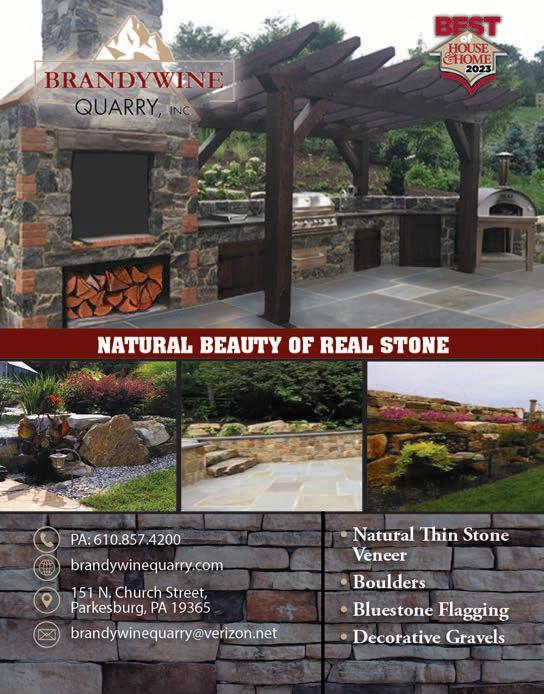

sistance ceramic, clay or aluminum.
Due to all of the necessary aspects that go into a fireplace system that may have to be divided among multiple specialists, some companies will act as a one-stop shop to fully guide a customer through the multifaceted process. Chimney sweeping is required for any system update, which Rettinger Fireplace Systems provides in conjunction with its concierge service.
“If we need a licensed electrician or plumber on the job, we’ll hire them for you. If you need permits and inspections, which almost all jobs do, we’ll take care of the permits, we’ll arrange for the inspections,”
says Rettinger. “You cannot do anything to an existing fireplace without getting a Level 2 inspection.”
The wide range of product options available for heating a home today allow for different types of operation, effect and maintenance. Ultimately, though, warmth in the home is primarily about comfort.
“Homeowners should really take a look at their fireplace to make sure that it’s creating an inviting, warm environment that makes their house feel like a home,” says Olsen. “Is it providing the ambiance, the atmosphere, the look, the style that fits their energy? They are creating that mindset to make a peaceful home.”

Allied Experts Cherry Hill, N.J. (856) 210-8824 AlliedExperts.com
C&C Heating and Air Conditioning Souderton, Pa. (215) 799-0515 CC-HVAC.com
Doctor Chimney Emerson, N.J. (201) 981-8382 DoctorChimney.com

Doylestown Air Pipersville, Pa. 215-598-7494
DoylestownAir.com
Newtown Fireplace Shop Newtown, Pa. (215) 968-3981
NewtownFireplaceShop.com
Rettinger Fireplace Systems
Voorhees, N.J. (856) 317-6490
RettingerFireplace.com


by Liz Hunter SHOWCASE
With modern technology and decades of experience, Let’s Face It gives your kitchen a brand-new look without the hassle of a remodel. Let’s Face It (A HomeTech Company)
After many years of living in the same home, it becomes easier to spot the areas where we’d like to have a fresh look. The furniture could be updated now that the kids aren’t climbing all over it, the carpet could be pulled up in favor of hardwood and especially in the kitchen, where we spend so much of our time, the cabinets have seen better days.
However, the prospect of a full kitchen remodel often causes people to delay that update. Between the permitting, the disruption of your family’s daily life and the length of time, it’s not very convenient—not to mention the cost.
Cabinet refacing is a cleaner and more organized approach to remodeling—an alternative that more homeowners are embracing. Let’s Face It, established in 1984, is the oldest cabinet refacing company in Southeastern Pennsylvania and has continually developed modern, state-ofthe-art technology and design to reface and enhance an outdated kitchen for 60 percent less than a full remodel, and often in as little as five days. Locally owned and operated by David Cerami, CKBR, Let’s Face It (LFI) has worked with thousands of homeowners and is nationally recognized as a pioneer in the cabinet refacing industry.
1013 N. Bethlehem Pike | Lower Gwynedd, Pa. (215) 343-2600 | LFIKitchens.com
“We can do design changes in the room that other companies can’t. LFI frequently removes outdated built-in desks and replaces them with base cabinets for additional storage and counter space. Another great option is using that area for a beverage station with a built-in wine fridge. We can create a builtin frame around the refrigerator for a custom look. Other modifications include changing base cabinets with doors to sturdy pot drawers, putting microwaves in islands and installing matching floating shelves,” Sol-


“We can do design changes in the room that other companies can’t.”
—Beth Soldswisch, LFI Senior Designer
matching veneers and panels and the company’s environmentally friendly process uses low-odor, non-toxic, EPA-regulated waterbased adhesives.
Clients can choose any style door in an almost unlimited range of materials. Shaker, modern and minimalist or traditional are all options. Stained genuine woods like walnut are gaining in popularity. LFI also offers durable painted products in a wide range of colors with custom colors also being available.
dswisch says.
LFI is not limited to cabinets and many homeowners prefer the simplicity of its onestop shop offerings. Clients may choose to add a new countertop as well, such as quartz or granite, and both products are now offered with lifetime sealers, in addition to tile and glass backsplashes with high-performance, factory-sealed grouts.
LFI also has licensed mechanical contractors, electricians and plumbers on staff.
“Our projects are professionally designed, engineered and installed by our own highly skilled employees,” says LFI Senior Designer Beth Soldswisch.
A consultation with homeowners will include the clients’ ideas being heard, as well as the designer presenting options that will bring those ideas to life. “We want to look at the rooms that are adjacent to the kitchen, especially if it’s an open concept floor plan, and suggest something complementary so the space will flow,” Soldswisch says.
Using your existing cabinet framework (if structurally sound,) LFI replaces the doors and drawer fronts with designer-quality products. LFI covers the cabinet boxes with
“The industry is heading toward products that are more durable, longer-lasting and easy to clean, especially for homes with children,” Soldswisch continues. For this look, LFI offers the highly popular 3DL finish, which is chip resistant and cleans with soap and water. “3DL finish is considered identical to a painted design and is also offered in a contemporary or primitive wood grain, available in classic Shaker, raised panel traditional and the European modern total-flat panel,” she says.
LFI can take the cabinets a step further than others in this industry thanks to its fullservice local wood shop. Homeowners can add custom cabinets, unique islands and tall pantries to their kitchen at a reasonable price.
“Nearly everyone gets our LED under-wall cabinet strip lighting which is longer-lasting and 80 percent less costly to use than incandescent lighting,” notes Soldswisch.
On completion, projects are certified with a lifetime cabinet refacing warranty. “Imagine, today, being able to hire a remodeling professional and at the end of the project you are given a lifetime warranty on both the labor and materials. This is not offered by any other company,” Soldswisch says.
LFI maintains a stellar reputation in the industry, with a 97.8 percent Guild Quality performance rating—one of the highest grades in the industry—and has been recognized with several Best of House & Home awards.

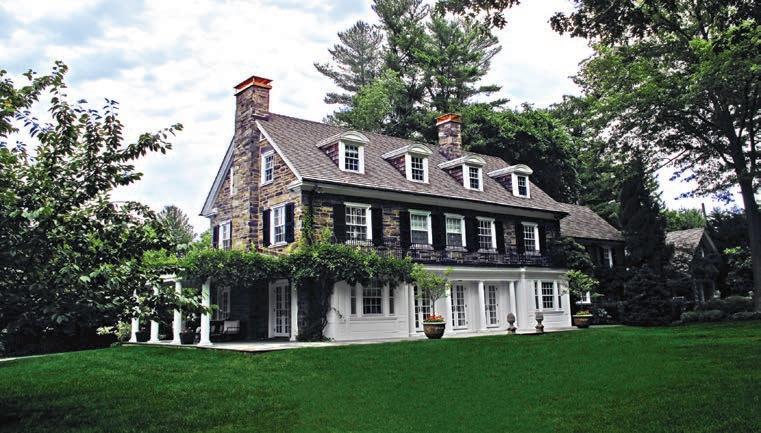





D.J. Cross, Inc., Chim Chimney sets itself apart with top-notch, certified staff and an ability to tackle any job, big or small. by
Kristen Dowd
There are a lot of things that set D.J. Cross, Inc., Chim Chimney apart from the competition. The Media-based company has the most certified technicians in the Philadelphia region, and owner Ben Cross would argue the family-owned business boasts the most qualified and experienced staff of any similar company in the entire country.
But he likes to think the true D.J. Cross difference is something a little more personal: his team’s passion and attention to detail.
“What really sets us apart is our people,” Ben says. “They truly are the experts.”
In 1981, D.J. Cross was established by Dan and Jayne Cross, offering chimney maintenance and restoration services to Philadelphia, the Main Line and beyond. As the years passed by, the company grew to specialize in both residential and commercial services and master complicated jobs, all while hiring only the best.
Two years ago, Dan and Jayne welcomed retirement when their sons, Ben and Jon, bought the family business.
“It can be a challenge for any business to transition from first to second generation,” explains Ben. But backed by their local upbringing—Ben and Jon are Malvern Prep graduates and both went to Temple University— and their 20 years of experience, D.J. Cross has thrived since the duo took the helm.
if not decades without any kind of regular maintenance. A lot can happen over the years.”
If there are issues with a chimney that hasn’t been inspected, a fire can easily get out of control. According to the National Fire Protection Association, inspections should be held annually. The inspection ensures that everything is in working order, as Ben notes that “chimneys and fireplaces often go overlooked or unthought of when it comes to home maintenance.”

With the fall season getting underway, customers should expect a one- to three-week lead time in terms of scheduling an inspection appointment. A D.J. Cross technician will come out to the home, perform the inspection and determine any next steps, if necessary.
“Everything starts with that inspection,” Ben says, adding they will utilize cameras for internal inspections, visual checks for external inspections, and even drones. If a cleaning is needed, the process does not leave behind a dusty mess.
“We use vacuums, protect the area with drop cloths,” he says. “We basically perform a dustless inspection and cleaning.”

“We’ve more than doubled our staff in the last two years,” he continues. “We’ve seen a lot of growth in the residential and commercial sectors of the business. We’re working on a multiyear-long project at the University of Pennsylvania. It’s exciting.”
They have a new business, Cross Break Sheet Metal, that manufactures custom chimney products. Ben also recently launched a commercial scaffolding business, Cross Braced Scaffolding, to handle safe access needs in the chimney, masonry and roofing industries.
They also don’t shy away from the more difficult projects: As members of the National Chimney Sweep Guild and with technicians certified by the Chimney Safety Institute of America, Fireplace Investigation Research and Education, National Fireplace Institute and National Air Duct Cleaners Association, they’re prepared for any job.
“We are the go-to business for the jobs that no one else is capable of handling. We are really specialized in those tricky jobs. The ones that are super high. The ones that are super complicated. The ones people just don’t have the wherewithal, capability or bandwidth to handle,” Ben says. “We tend to be the company of choice for anything specialized.”
When D.J. Cross first started, it was imperative that safety came first in chimney maintenance, which remains a cornerstone of the company today.
“The easiest thing I explain to homeowners is it’s a fire in your living room. We like to keep your fire in its place,” Cross says. “We see a lot of chimneys and fireplaces that go years
And if the job calls for something more involved than a cleaning—repairs, for instance— D.J. Cross will take care of that, too.
“We handle that, from soup to nuts. No two chimneys are built alike, so there are different remedies for each type of repair,” Ben says.
In addition to wood-burning fireplaces and accompanying chimneys, D.J. Cross inspects and services venting systems for heaters and gas fireplaces.
“A lot of people think a gas fireplace doesn’t need regular service,” Ben says. “We have a whole team of gas specialists that are focused on gas fireplaces and regular maintenance.”
And for those who think an inspection isn’t necessary, Ben stresses there are a number of influential factors, not just the overall wear and buildup that may occur in a year. Home improvements— new exhaust fans in the kitchen, new flooring near the fireplace—can also impact a chimney, or birds may have nested in the structure. A switch from oil to gas heat would warrant an inspection, too.
“There are many reasons to do that annual inspection,” Ben says. “We like to be preventative and proactive instead of reactive.




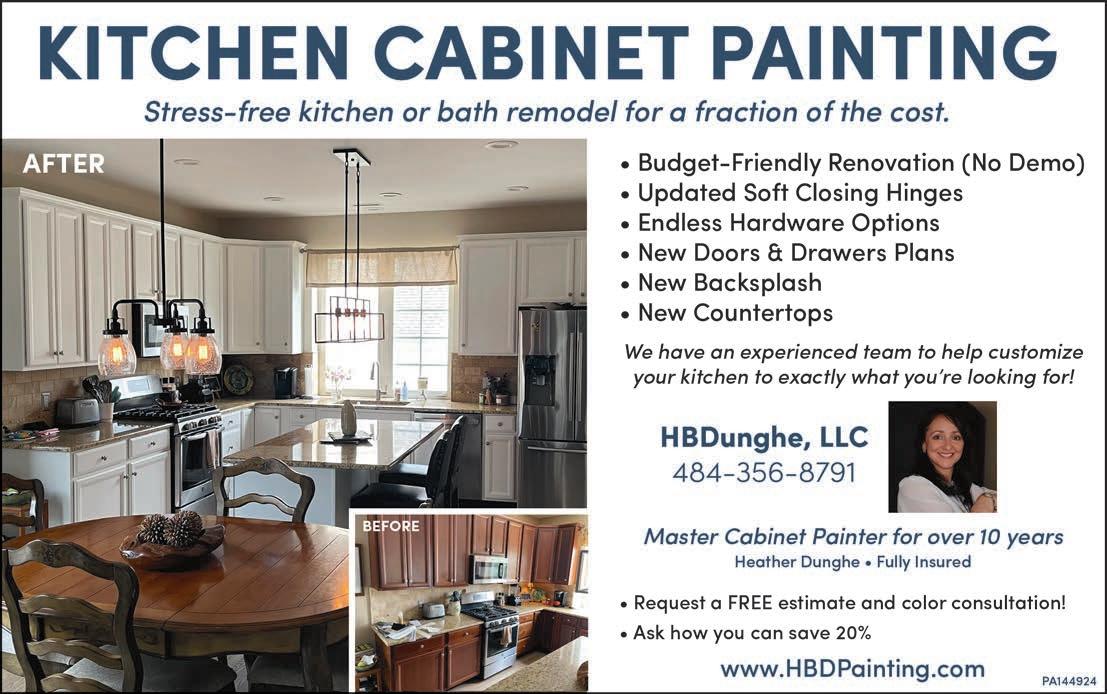



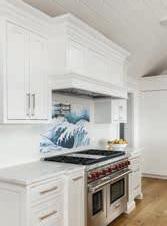
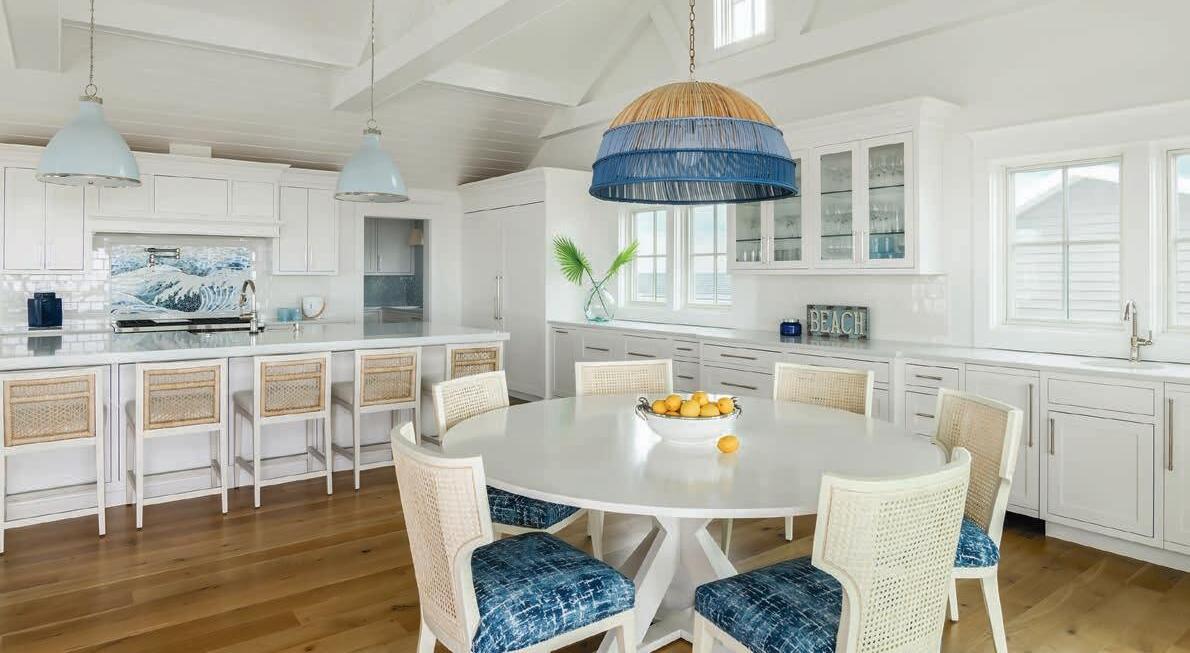


Don designs luxury cabinetry for Master Design Cabinetry in Lancaster County. He was referred to the homeowners through a builder of fine shore homes, Ocean City-based Buck Custom Homes. Yet the family had already been familiar with Don’s work, as he’d designed the cabinetry for a property owned by a relative.
“The house is right on the Atlantic Ocean, and that’s what drove the vibe of the house,” Don says. “It’s an open-concept living space, and the whole design is light and airy. It’s a real outdoor experience, and the cabinetry design

County, not far from Master Design’s headquarters in the town of East Earl, Don made several trips to the client’s Ocean City home.
“Ocean City is a bit of a drive from my home, and any trip down there turns out to be a 12-hour day, but how could you not love working on a project like this?” he says. “When I took my lunch, I’d walk out on the sand and just look at the ocean. It’s an incredible location.”
Thanks to the efforts of Don and the rest of the team at Master Design, working hand in hand with the interior designer and the builder, the home suits its majestic surroundings.
In total, Don designed painted-maple cabinetry for 21 spaces in the expansive seaside home. The kitchen, for example, features custom cabinets for a cooking area, a large island, and a 25-foot wall overlooking the
The project started in July 2021, and Master Design completed the final leg of the installation in May 2023. Wall says the homeowners’ response has been unequivocally positive: “They love it.”
H e loves it, too, in part because the homeowners appreciate the level of craftsmanship, elegance, and attention to detail for which Master Design has become known. For anyone considering an investment in custom cabinetry as part of a new build or a renovation, he offers the following words of wisdom: “It’s an investment that pays off.”
“It’s important to find people who have experience doing this kind of work,” he adds. “Custom cabinetry is an investment in quality. If you make your decisions based solely on the cheapest price, you’re going to find out that you get what you pay for.”

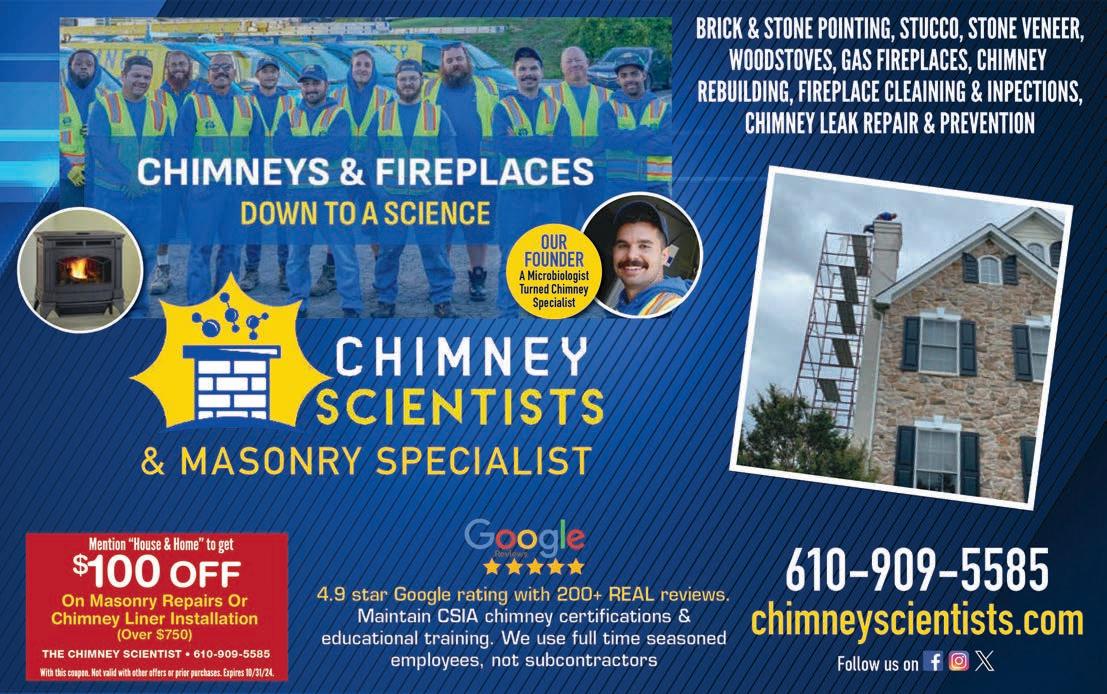


Fall is the perfect time to begin winterizing your home.
BY PETER PROKO
With autumn’s arrival, countless homeowners are looking forward to admiring the fall foliage and enjoying extended outdoor activities whether around the fire pit, the pumpkin patch or otherwise.
But the fall season also creates a great opportunity to get one’s home ready to handle the harsher conditions that Old Man Winter brings. Winterizing your home should be top of mind for all homeowners, as it can solve problems in the short-term while also saving you lots of time, money and aggravation in the long term.
Adam Parnes of Global Home Improvement acknowledges the importance of staying on top of a winter checklist and says that homeowners who don’t regularly do so are tempting fate. “I think anyone who is winterizing their home is already ahead of the ball game,” he says. “Upgrading insulation, re-caulking windows and cleaning gutters are some of the easier solutions to a safe home this winter.”
House & Home spoke with various leaders in the home improvement industry to get a better understanding of the key areas to focus on when winterizing your residence. Whether making energy-efficient upgrades to the interior or making necessary repairs to the exterior that also help boost curb appeal, the fall season offers ample opportunity to rectify any issues now and give homeowners some reassurance for once winter arrives.


Checking to see if one’s HVAC system is in need of a tune-up is recommended by industry professionals. Annual service will ensure things are running smoothly and curtail rising energy bills that result from suboptimal operation.
Poorly insulated attic space can also be a major contributor to energy loss. According to the Department of Energy, a properly insulated attic can help slash you heating bill as much as 50%.
Another common contributor to energy loss is poorly sealed windows and doors. “Not only do older windows and doors not have updated thermal efficiency, but many of them have air leaks, which are just inviting cold air directly into your home,” says Parnes.





Brian Iwano, founder and project manager with Blue Tree Builders, says it can be difficult for most people to tell if it’s time to replace their windows if there’s no clear and present physical damage.
“The obvious signs your windows need replacing are when the seal fails and air gets between the panes; and with older wood windows, when the wood becomes damaged. Aside from these examples, it can be difficult to notice air seepage during mild weather,” he says.
Replacing one’s roof or siding can be a sizable expense and cause some homeowners to delay any major repairs or replacements for another season in hopes they can avoid any catastrophic issues while saving some money. But one major winter storm can change that equation and the result could be an even heftier out-of-pocket cost.



When looking to determine if your roof may be a candidate for either repair or replacement, one tell-tale sign is the appearance of leaks. But there are also other factors to consider, namely age. Is the roof 20-25 years old? If so, it’s likely the shingles have or will soon start to curl and the adhesion to one another will become compromised.
“The most important thing to consider is what could happen if you don’t replace it,” says Parnes. “A leaky roof will cost you way more money in damage then the money you save by trying to wait one more year.”
“This may seem obvious, but look for any damage that may have occurred from summer storms,” adds Iwano. “It’s pretty easy to look for missing shingles. This in itself isn’t all bad, as the real waterproofing is maintained by the underlayments and other prep. However, missing shingles do leave your roof open to further wind damage, which would definitely cause bigger problems very quickly.”
Danny Cenaj of Siar Construction says in addition to seeing missing or buckled shingles that are no longer lying flat, there are other noticeable changes you may recognize. “If one area is much darker than another part of the roof; that is one of the other signs that it may be time to get a roof inspection. Another thing would be if you are cleaning your gutters and you are able to see a lot of granules that have fallen from the shingles,” he says.
If your roof is old or you are not sure it will last another winter, fall is actually the ideal time to have it replaced. In the summer when battling extreme heat and humidity, the shingles can occasionally become damaged during the installation process, something that is certainly avoidable thanks to fall’s cooler temperatures.
“The fall is one of the best times of the year to replace the roof,” affirms Cenaj. “Homeowners can make sure they get everything done right before winter, which gives them peace of mind that they will not have to contend with any issues.”




Elsewhere on the exterior, Iwano points out that problems with siding usually occur at transition points either between trims or moldings, or aluminum capping. “Additionally, end pieces and tops commonly become loose, which also [could lead] to further wind damage. Again, like roofing, the real protection is in the prep. But you definitely want to mitigate any vulnerability as soon as possible,” he says.
For those who enjoy lighting a fire inside the home during the winter months, fall is also the right time to have your chimney serviced, as a detailed inspection can help to uncover any potential hidden issues. “Inspections will check for any cracks in the cement or the mortar or if there are any other problems, and you will be able to determine if the chimney will be good for the winter or not,” says Cenaj. At the very minimum, Cenja advises


homeowners to have their chimneys cleaned before seasonal use. “Getting a chimney cleaned is something I would say is mandatory every fall before you start using your fireplace,” he says.
It’s important to know how to winterize a pond and prepare fish to withstand the
harsh winter. Over a year, your pond will accumulate debris and organics such as leaves, twigs, grass clippings and fish waste. Left unchecked, decaying debris can release toxic gas and reduce oxygen levels. Removing this debris and replacing filtration systems with aeration kits and deicers will help ensure oxygen levels stay as high as possible and provide aeration,





ventilation and circulation throughout the winter months.
“When fall officially arrives, and the trees start losing their leaves, we often recommend netting your pond,” says George Mihalchick of Ponds by George.
Fall netting is intended for collecting debris, and is often a choice to use for predator protection, which is why some pond owners even choose to leave the net in place until spring, but it is important to note that these nets are not de-
signed to carry a heavy snow load, and should be removed in the winter before any snowfall.
“Once all the leaves have fallen, begin your fall pond care by removing any netting. Pond netting should be stored indoors to keep it safe from wear and tear due to heavy snowfall and ice,” says Mihalchick.
As fall ends and winter approaches, plants will naturally fall into a dormant state. To winterize hardy plants, use
your pruning tools to trim off dead foliage just above the soil. Removing debris that may have made it into the pond should also be removed. “Rotting leaves, twigs or dead aquatic plants will put stress on your pond’s oxygen levels throughout the winter, which puts your fish at risk. I recommend removing leaves and debris from ponds and streams with the help of a hand net if possible,” Mihalchick details.
Another way to keep fish safe when temperatures drop is with the help of aeration, and de-icers help to keep a hole open in the ice during winter months. “This prevents harmful gases from being trapped under the ice and allows oxygen levels to stay saturated in the pond. Or if your pond has a waterfall, leave it running, the movement will cause a natural opening,” Mihalchick explains.

Blue Tree Builders Cherry Hill, N.J. (609) 240-3231
ExperienceBlueTree.com
Global Home Improvement Serving Pa. and N.J. (888) 234-2929
GlobalHomeInc.com
Ponds by George Southampton, Pa. (215) 396-7500
PondsByGeorge.com
Siar Construction Garfield, N.J. (973) 964-1777
SiarConstructionNJ.com





